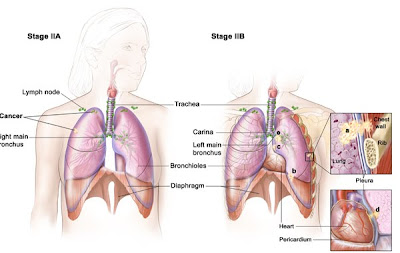



Dear readers whenever a particular subject is too much highlighted, so much information regarding that subject is spread, there is always some misinformation or misconception as well. Since 'Mesothelioma' is a hot topic these days, therefore please find below the common misconceptions and myths about asbestos exposure and mesothelioma lung cancer and how to survive them:
-Smoking causes malignant mesothelioma.
With so much mesothelioma information available, you might think that this false conception would already be exposed. Smoking does not cause mesothelioma. Smoking can weaken the lungs and immune system, and when a person has asbestos exposure, the development of mesothelioma lung cancer can occur. Smoking can cause lung cancer, but not asbestos lung cancer.
-Mesothelioma is contagious and genetic.
Mesothelioma is not genetic and it is not contagious. The hereditary myth likely started when fathers and sons developed similar asbestos symptoms without evaluating that they worked together in similar environments. Also, asbestos fibers can be brought home on clothing, skin, and even hair follicles, which in turn expose the family to asbestos. Exposure can cause mesothelioma but it is not contagious and not hereditary.-Malignant mesothelioma is not treatable.
Mesothelioma lung cancer is treatable and several options are available. Common avenues of treatment include mesothelioma chemotherapy, radiation, and even surgery. With new research and developments coming out all the time, patients can take advantage of experimental treatments. Massage therapy and acupuncture offers alternative ways to treat asbestos symptoms. Malignant mesothelioma is treatable and options are available to provide you with comfortable care and possibilities of surviving this disease.
-Those with asbestos exposure should only be concerned with mesothelioma.
With the media promoting asbestos lawsuits and concern, fear is being introduced among those who have been exposed to asbestos at one time or another in their life. Any person exposed to asbestos or experiencing asbestos symptoms is at risk for the development of mesothelioma. Those exposed to asbestos should contact their medical provider and follow-up with routine check-ups and visits which require medical testing. If any unusual symptoms occur, your medical provider should be informed right away.
-Patients will not survive mesothelioma because there is no known cure.
There is no known cure for mesothelioma lung cancer; however, treatment options are available which increase the likelihood of survival and length of days. It is possible to treat asbestos symptoms early on even though symptoms may take years to develop. In the event of asbestos exposure, it is important to keep your medical provider informed.















































